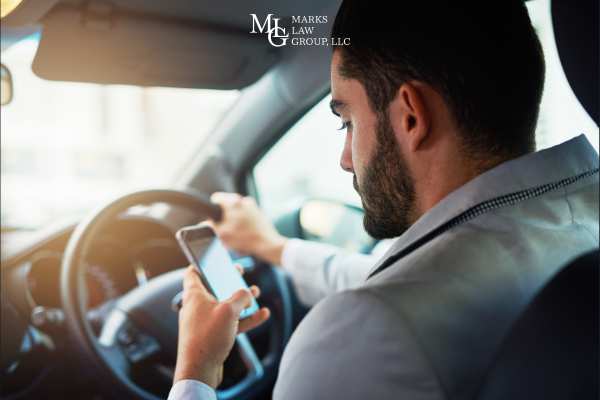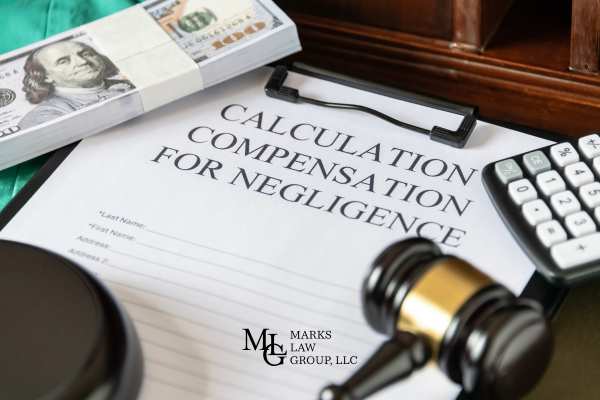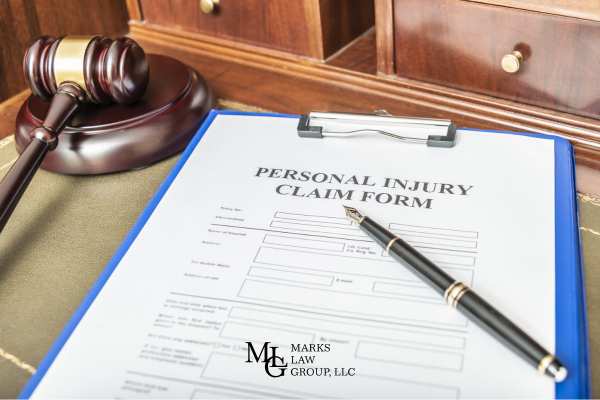Distracted driving is a growing concern on the roads, significantly increasing the likelihood of accidents and altering the dynamics of liability in such incidents. When drivers engage in activities like texting, talking on the phone, or even adjusting the radio while behind the wheel, they divert their attention away from the road, making them more susceptible to collisions. Understanding how distracted driving impacts accident liability is crucial for both victims seeking compensation and drivers aiming to protect themselves legally.
As the legal implications of distracted driving can be complex, it’s essential to know your rights and responsibilities in the event of an accident. If you or a loved one has been affected by a distracted driving incident, don’t navigate this challenging situation alone. Call us at (678) 251-9309 to schedule a free consultation with a Decatur car accident attorney. You can discuss your case and explore your options for pursuing compensation. Your safety and rights deserve to be prioritized!
Determining Liability in Distracted Driving Accidents
In Georgia car accident claims, distracted driving can significantly impact liability. When a driver is found to have been distracted at the time of an accident, they are more likely to be considered at fault. This is because distracted driving constitutes negligence, which means the driver failed to exercise reasonable care on the road. Here’s how it can affect liability:
Proving Negligence
To establish liability in a car accident claim, it must be shown that the at-fault driver acted negligently. Distracted driving, whether due to texting, eating, adjusting the radio, or any other activity that diverts attention from driving, is typically considered negligent behavior. If the distracted driver’s actions directly contributed to the accident, they could be held liable for any resulting injuries or damages.
Evidence of Distracted Driving
In accident claims, evidence of distracted driving can strengthen the case against the at-fault driver. This might include:
- Cell phone records to show texting or calls at the time of the accident.
- Witness statements from people who saw the driver behaving erratically or not paying attention.
- Traffic camera footage or dashcam videos that capture the driver’s inattention.
- Police reports that document the officer’s observations of distracted driving.
Increased Penalties for Distracted Drivers
Georgia’s "Hands-Free Law" prohibits drivers from holding or supporting a phone with any part of their body while driving. Violating this law, especially if it results in an accident, can increase the penalties the driver faces. In civil cases, this could result in a higher compensation payout for victims, as it adds weight to claims of negligence.

Impact on Insurance Claims
If it is established that the driver was distracted, their insurance company may face greater liability in covering damages. Insurance adjusters will take distracted driving into account when assessing fault and determining settlements. For the victim, this may result in a more favorable outcome, as distracted driving is a clear form of negligence.
In summary, distracted driving increases the likelihood of the distracted driver being held liable in a Georgia car accident claim. It can also affect the distribution of fault, the strength of the evidence, and the penalties faced by the at-fault party.
How Comparative Negligence Works in Distracted Driving Cases
Comparative negligence plays a critical role in distracted driving cases, particularly in states like Georgia, which follow a modified comparative negligence rule. This legal principle helps determine liability and the amount of compensation a victim can recover when both parties share some responsibility for the accident. Understanding how comparative negligence works in distracted driving cases is important for determining fault and possible compensation.
What is Comparative Negligence?
Comparative negligence is a system used to apportion fault among parties involved in an accident. In Georgia, the modified comparative negligence rule allows individuals to recover damages as long as they are less than 50% responsible for the accident. If their degree of fault exceeds 50%, they are barred from receiving compensation. Additionally, the amount of compensation a plaintiff can receive is reduced by their percentage of fault.
How Comparative Negligence Affects Distracted Driving Cases
In distracted driving cases, both the distracted driver and the other party may be assigned a percentage of fault, depending on their actions leading up to the accident. Here’s how it can influence liability:
- Proving Fault of the Distracted Driver: When one driver is distracted—whether by texting, eating, or using a GPS—and their distraction directly causes the accident, they will likely be assigned a significant portion of the fault. If it is determined that the distracted driver is primarily responsible, the other driver can seek damages, though the final amount depends on how fault is shared between the parties.
- Sharing Responsibility: There are scenarios in which both drivers may share fault in a distracted driving accident. For example, if one driver was speeding or failed to yield the right of way while the other was texting, both could be found negligent. In this case, the jury or insurance adjuster will assign a percentage of fault to each party. The distracted driver may be 70% at fault, while the speeding driver might be 30% at fault. The speeding driver can still recover damages, but the award will be reduced by their 30% fault.
- Impact on Compensation: Under Georgia’s modified comparative negligence law, a distracted driver who is less than 50% at fault can still recover damages. However, their recovery is reduced by their percentage of fault. For instance, if a distracted driver suffers $100,000 in damages but is found 40% at fault, they would only recover $60,000.
- Defense Strategy for Distracted Drivers: In some cases, the distracted driver might try to shift part of the blame to the other party to reduce their liability. For example, the defense might argue that the other driver was also negligent by running a red light or failing to signal a turn. If the jury agrees, they could reduce the distracted driver’s percentage of fault, thus lowering the amount they owe.
Examples of Comparative Negligence in Distracted Driving Cases
Example 1: A driver is texting and rear-ends a vehicle that stopped abruptly. The texting driver is found 80% at fault because they were distracted, but the other driver is found 20% at fault for stopping suddenly. The distracted driver can only recover 20% of their damages, while the other driver can recover 80% of theirs.
Example 2: A driver runs a red light while the other driver is distracted by using a GPS. Both drivers are considered negligent—one for running the light and the other for being distracted. The red-light runner may be found 60% at fault, while the distracted driver may be found 40% at fault.
Evidence in Comparative Negligence
To establish how fault is distributed in distracted driving cases, various forms of evidence are used, including:

- Cell phone records to show if texting or calling occurred at the time of the accident.
- Eyewitness testimony to confirm distractions like phone usage or eating.
- Traffic cameras or dashcam footage to capture the incident.
- Accident reconstruction to understand how both parties contributed to the crash.
In distracted driving cases, comparative negligence helps distribute fault between the parties, and it significantly affects the amount of compensation a victim can receive. In Georgia, being found partially responsible does not necessarily prevent someone from recovering damages, as long as their fault is less than 50%. However, the final compensation is reduced by their degree of fault, making it essential to establish clear evidence of how distraction contributed to the accident.
Proving Distracted Driving in Court
Proving distracted driving in a court of law can significantly impact the outcome of a personal injury case following a car accident. Specific types of evidence are essential to establish that the other driver was at fault due to distraction. Here’s an overview of what is needed to make a strong case.
- Cell Phone Records
- Text Messages and Calls: Records can show if the driver was texting or making calls at the time of the accident. Subpoenaing these records can reveal crucial information about the driver’s activities leading up to the crash.
- App Usage: If the driver was using social media or other applications, that data can be used to demonstrate distraction.
- Eyewitness Testimony
- Witness Accounts: Statements from bystanders, passengers, or other drivers who saw the distraction can provide corroborating evidence. Their observations can help establish that the driver was not focused on the road.
- Consistency: Multiple eyewitnesses providing similar accounts can strengthen the case.
- Police Reports
- Accident Reports: Officers often document observations about the driver’s behavior and any evidence of distraction at the scene.
- Citations: If the officer issued a ticket for distracted driving, this can serve as evidence in court.
- Notable Comments: Any remarks made by the driver to the officer about using their phone or being distracted can also be significant.
- In-Car Technology Data
- Event Data Recorders (EDR): Many modern vehicles have black boxes that record data like speed, braking, and steering. Analyzing this data can help establish whether the driver was distracted or engaged in unsafe behavior.
- Navigation Systems: If the vehicle’s GPS was being used at the time, data from that system could show that the driver was interacting with it rather than focusing on the road.
- Surveillance Footage
- Traffic Cameras: Footage from cameras at intersections or along the road may show the moment leading up to the accident, providing visual evidence of distraction.
- Dash Cameras: If either vehicle had a dashcam, it might have recorded the driver’s actions before the crash.
Importance of Evidence to Prove Distracted Driving
Police Reports provide an official account of the accident and include valuable information about the scene, any observed violations, and the officer’s assessment of the situation. A well-documented report can serve as a vital piece of evidence to establish liability in court.
Eyewitnesses can offer firsthand accounts that corroborate claims of distracted driving. Their statements can highlight specific behaviors observed just before the accident, such as the driver looking at their phone or engaging in other distracting activities. The credibility and reliability of these witnesses can significantly bolster the case.
Use of Cell Phone Records and In-Car Technology Data in Court
Cell phone records and in-car technology data can be crucial pieces of evidence in accident claims. These records may reveal whether d istractions like texting or phone calls contributed to the crash, helping to establish fault in court.
istractions like texting or phone calls contributed to the crash, helping to establish fault in court.
- Cell Phone Records: These records are pivotal in demonstrating that the driver was using their phone when the accident occurred. Courts generally allow this type of evidence, as it can provide a clear timeline of the driver’s activities leading up to the crash.
- Subpoenas: An attorney can issue subpoenas to obtain these records, which can show the specific times and types of activity on the phone.
- In-Car Technology Data: Evidence from onboard computers or navigation systems can also be used in court. This data can illustrate patterns of behavior that indicate distraction.
- Expert Testimony: Specialists in technology and accident reconstruction can interpret this data and explain how it relates to the driver’s actions and the subsequent accident.
Proving distracted driving in court requires a multi-faceted approach to gather and present compelling evidence. Cell phone records, eyewitness testimony, police reports, and data from in-car technology play crucial roles in establishing liability. Working with legal professionals who understand how to effectively utilize this evidence can significantly impact the outcome of a distracted driving case.
Protect Your Rights After a Distracted Driving Accident
the impact of distracted driving on accident liability cannot be overstated. When drivers fail to pay full attention to the road, the consequences can be severe, affecting not just the driver but also other innocent road users. Understanding how liability is determined in these situations is crucial for anyone involved in an accident.
If you or a loved one has been injured due to a distracted driving incident, it's essential to seek legal counsel. Contact us today to discuss your case and learn how we can help you navigate the complexities of accident liability. Your path to justice starts here!
